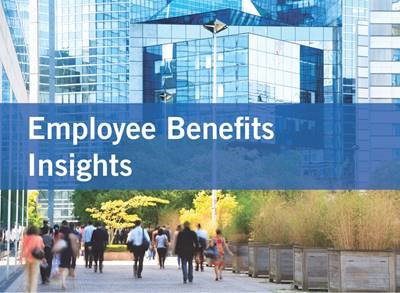
On March 11, 2021 President Biden signed the American Rescue Plan Act (Public Law 117-2) (“ARPA”). Among its many provisions, the statute contains “funding relief” for single employer defined benefit pension plans. This relief was achieved by amending Internal Revenue Code section 430 to: (1) extend the period for amortizing unfunded liability from 7 years to 15 years (Code §430(c)(8)); and (2) extend prior law interest rate relief (i.e., determining the discount rate used to calculate plan liability by averaging interest rates over a 25-year period so as to ameliorate the effects of unusually low current interest rates), which was due to start phasing out in 2021, through to 2030.
The new 15-year amortization rule is applicable for plan years beginning after December 31, 2021; however, the sponsoring employer may choose to implement this new rule as early as plan years beginning after December 31, 2018. The interest rate relief applies with respect to plan years beginning after December 31, 2019; however, the sponsoring employer may choose to not apply these changes to any plan year beginning before January 1, 2022.
This “relief” does not in any way reduce the benefits for which the plan is liable. However, it does change the description of that liability for certain purposes and the required amortization period to give contributing employers a longer period of time to make necessary plan contributions. Basically, this new rule allows employers to “kick the can down the road” and extend unfunded liability longer than the current law allows.
This “relief” is effective for purposes of calculating the minimum required contributions that an employer must make to the plan and for calculating the adjusted funding target attainment percentage (“AFTAP”) that is used to determine whether plan is sufficiently funded to allow lump-sum distributions.
This “relief” does not, however, apply for determining whether the employer’s plan owes variable rate premiums to the PBGC (i.e., for this purpose, the PBGC calculates the plan’s unfunded liability using its own discount rate which is much lower than the “smoothed” interest rate allowed by these new ARPA rules). This “relief” also does not apply for determining the accounting liability used on the sponsoring employer’s financials which must be calculated using a blend of current corporate bond rates which are also much lower than the new ARPA “smoothed” discount rate and will, therefore, result in a larger unfunded liability being shown on the sponsoring employer’s balance sheet.
To the extent that the sponsoring employer has been using a liability driven investment (“LDI”) strategy to limit volatility on its balance sheet and or to reduce or eliminate variable rate PBGC premiums, it may need to continue pursuing those strategies using an unfunded liability figure calculated using the lower PBGC and GAAP (“generally accepted accounting principles”) discount rates. Nevertheless, this limited funding relief provided by ARPA does offer employers who sponsor single-employer defined benefit plans additional flexibility in certain areas and could prove useful.
Employer sponsors of single-employer defined benefit plan should consult with their actuaries and/or attorneys to determine whether these new rules can be usefully applied towards achieving the employer’s goals with respect to their defined benefit pension plan and/or whether any of the alternative effective dates should be used. Finally, it is likely that the IRS will issue guidance on the mechanics of implementing these new rules later this year.
 |
As part of Foley’s ongoing commitment to provide legal insight to our clients and colleagues, our Employee Benefits and Executive Compensation Group has a monthly newsletter we call “Employee Benefits Insights,” where we provide you with updates on the most recent and pressing matters concerning employee benefits and other related topics. Click here or click the button to the left to subscribe. |
